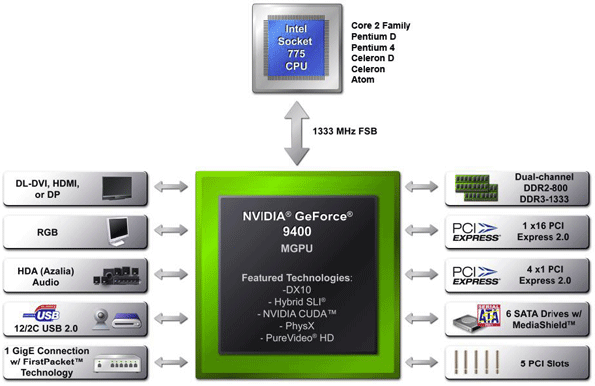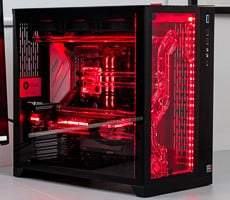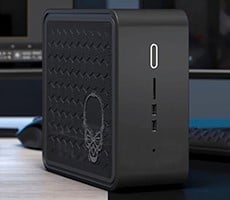Acer Aspire Revo SFF NVIDIA Ion PC
We have been talking about NVIDIA's Ion since late last year when news first broke of the ultra small form factor platform. At the time, NVIDIA's tiny Atom-powered prototype system wasn't even called Ion yet, but images of the miniscule motherboard that would eventually be used in the reference platform had already surfaced and the community was buzzing with interest. One of the major concerns with most netbooks and nettops was their relatively weak integrated graphics solutions, and Ion would potentially address that concern.
Around the time when Ion was first announced, there was some scuttlebutt that Intel "disapproved" of the platform and that the company wouldn't sell OEMs Atom processors separately, without pairing them to an accompanying Intel chipset. Those rumors were soon squashed, however, because Intel does in fact sell Atom processors independent of a chipset. Although, we think it's still pretty safe to say Intel isn't exactly thrilled with Ion's existence.
Regardless of what anyone thinks of Ion though, the platform is moving closer to public availability. We took a look at NVIDIA's Ion reference system a couple of months back and in our conclusion stated that "we want one - preferably sooner than later". Well, the wait is almost over as the first publicly announced Ion design win has landed in the HotHardware labs, Acer's slick Aspire Revo...
Acer Aspire Revo
|
|
|
|
|

We have already discussed Ion in a previous article here at HotHardware, so we'll paraphrase a bit for an explanation as to what you're seeing in the block diagram above. With the exception of things like I/O port connectors, power and passive components on the PCB, and physical layer chips for network and video connectivity, NVIDIA's Ion is essentially a one chip solution. Supporting Intel's processor families from Core 2 to low power Atom solutions, NVIDIA's Ion MCP offers a multitude of various subsystem functionality. The chipset supports both DDR2 and DDR3 system memory and offers a single x16 PCI Express 2.0 link, as well as 4 x1 links and up to five standard PCI slots. In addition, support for dual link DVI, HDMI, Display Port and analog RGB video output is built in, along with up to 12 USB 2.0 ports, 6 SATA ports and a single Gigabit Ethernet port.
Finally, the integrated Ion graphics core with its 16 shaders, offers full DX10 compatibility and full HD video hardware offload, in addition to other features like Hybrid SLI and NVIDIA's CUDA technology. If you'd like a full refresh on NVIDIA's family of GeForce 9300 and 9400 chipsets which are identical to Ion, we've covered them in depth here previously. After you're done checking out that refresher, continue on and check out the Acer Aspire Revo...






